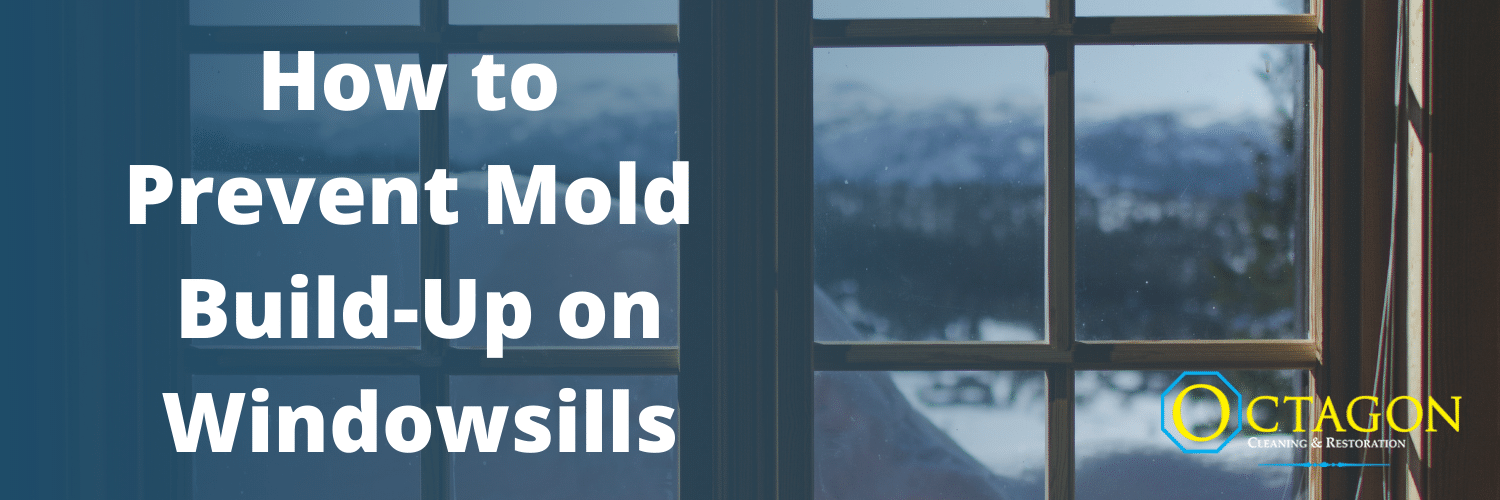
Have you ever noticed mold growth on your windowsills and wondered why it is growing there? If you answered yes, then you are not alone. Mold growth on windowsills is not uncommon and can lead to staining, rot, and mold-related health issues if the underlying problems are not corrected. The leading causes for mold growth on and around windowsills are cool air leaking in from around the windows and excess humidity within the home.
Preventing Mold Build-Up on Windows
Let start by going over how cold air and moisture can get in around windows. Cold air and water can enter through cracks in the caulking, decaying building materials that hold the window in place, and damaged window seals. Leaky windows can lead to many issues such as heat loss, rot, and mold growth on the windowsills.
When cold air contacts warm surfaces, condensation develops and collects on the glass. If this moisture goes untreated will lead to mold growth. Before we can remove the mold, we will need to inspect caulking, framing, gaskets, and seals around the windows to ensure that they are in good condition. If you find any of these issues, repairs will need to follow as soon as possible to prevent additional damages.
While it is impossible to stop all the cold air from coming in, limiting as much as possible will prevent further damage. Once the issues get resolved, the mold will need to be removed. To remove the mold, we must clean and treat the window and windowsill using a mild detergent and a stain remover if staining is left behind. Once complete, it is critical to keep the areas clean and dry to prevent the mold from coming back. If you see moisture building up on the insides of the windows again, be sure to dry the areas regularly.
What Causes High Humidity in a House in Winter?
Now that we have gone over cold air getting in, did you know that condensation on windows can come from too much humidity inside the home? Humidity inside our homes is necessary to live healthily and comfortably. Not having enough can lead to respiratory issues, itchy dry eyes, nose bleeds, dry flaking skin, and sore throats. Too much humidity can lead to damaged building materials, musty odors, and mold growth. Many contributing factors cause excess moisture in a home.
See below for some issues that can lead to excess humidity if not addressed:
- Plumbing leaks
- Roof leaks
- Dirt floor basements/crawlspaces
- Attic’s that lack ventilation
- Dryers, Bathroom exhaust fans, and range hoods improperly exhausted inside the home
When the temperatures outside begin to hover at or below freezing, the warm moist air inside our homes meets the cold glass window, condensation forms and runs down onto the windowsill overtime mold will begin to grow on the window and windowsills. Mold growth on windowsills is a common issue and may not seem like a big deal, but over time can lead to rot if the underlying causes are not corrected.
One way to prevent this issue from becoming a problem is by controlling the humidity. The best way to determine the humidity level in your home is by using a hygrometer. A hygrometer measures the amount of water vapor in the air. It is necessary to have some humidity in a home to keep us comfortable too much, causes us to be uncomfortable, mold to grow, and cause building materials to rot. See the advice from the professionals on the recommended humidity levels in a home. For more information about controlling the humidity inside your home, please see what the EPA has to say!
How Can Tell If Mold is Growing in Your House?
Mold growth inside a home is a serious matter that can affect your health and the health of your home. If you notice mold growth building up around your windows and sills and are unsure what you should do, we recommend that you contact a weatherization specialist. They will come out and inspect your home, help determine the causes of the growth and work to repair the issues to prevent the mold from building up on your windowsills. If you need help to get rid of your mold, give us a call!

